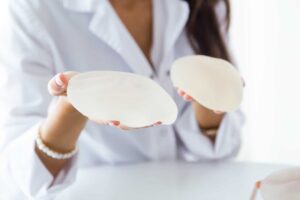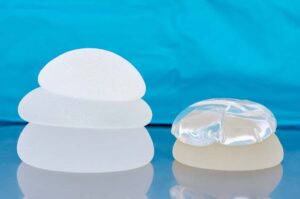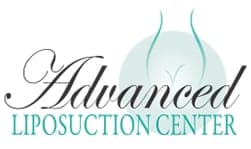Breast Implants Pittsburgh
Breast Implants Pittsburgh PA
WANT TO ENHANCE YOUR BREASTS WITH IMPLANT SURGERY?
The Advanced Liposuction Center in Cranberry Township, PA can help you feel better about your breasts and your body. Highly customizable breast implants allow you to increase breast size, improve shape, and alter nipple position.
Are breast implants right for me?
Here is a typical but dramatic example of why a woman may choose breast implants surgery. When finished nursing, a woman notices that both breasts had become “droopy, lumpy, and flat.” Fearing the worst, she immediately schedules an appointment with her doctor. Upon examination, her doctor reassures her that she doesn’t have cancer, and that these types of changers are normal. Her next question goes something like “when will they return to normal?” Unfortunately, the answer is that they don’t. Breast implants become the only real option in cases such as this.
Causes of Breast Sag
Any number of things take their toll on a woman’s breasts, including pregnancy, breast feeding, and gravity. Over time, most breasts lose volume as part of the normal aging process, with genetics playing a large role. Many choose to do nothing, while others invest in lift bras to temporarily improve appearance. Other women, however, choose breast augmentation surgery is by far the most common cosmetic procedure performed today. In America alone, about 100,000 women a year receive breast implants.
Shape and Symmetry of Breasts

Adding to breast volume is by far the most common goal of breast implants and enhancement procedures. Breast shape and symmetry, however, are perhaps just as important. In the minds of many patients, the ideal breast is full at its upper pole, gently sloping towards the lower pole. The nipples points slightly upwards, and the breast itself is firm with little visible sagging. In short, this describes many of the characteristics found in young adult women.
Unfortunately, gravity, pregnancy, weight loss, and the passage of time can alter this aesthetic. The skin and breast tissue become stretched out, resulting in a sagging, deflated look. For many women, a pronounced loss of volume also occurs. With proper augmentation using modern breast implants much of this is permanently reversible. Saline implants not only restore lost volume but restore (and even improve) shape as well.
Attaining the ideal, natural “beconning breasts” described above is possible in many cases. Almost any desired size is easily achievable, as is perfect symmetry. All of this is made possible using customized implants specifically shaped for each individual patient.
Saline or Silicone: which type of breast implants is right for you?

This depends largely on what you want to achieve. Silicone is noted for its very realistic feel. It closely matches the firmness and density of natural breast tissue, yet is some
what stiffer than saline. Implants made of Silicone lend themselves to a very natural look and a realistic feel. They have soft edges which blend easily into existing tissue, and are indeed in wide use today. This being s
aid, they’re probably not the best choice for a large increase in size.
In all fairness, saline implants share many of the above characteristics. While older generations of saline implants could certainly achieve a realistic look, they were infamous for not moving or feeling natural. The results were often seen as overly firm. An artificial “ripple effect” was also sometimes noticeable when the breasts moved. Today, these problems have been largely solved. Saline implants have proven themselves just as well.
MemoryGel® Breast Implants
After decades of research and testing in US women, in 2006 MemoryGel® Breast Implants were FDA approved – an important advancement in the field of breast augmentation.
Schedule your Breast Implant Consultation at the Advanced Liposuction Center in Cranberry Twp, PA.
If you’re serious about permanent breast enhancement, the first step is scheduling a free consultation with Dr. Giraldo. These face to face breast implant consultations always confidential and there’s no obligation. You’ll find out if you’re a good candidate, go over your options, and develop a personalized treatment plan.
Simply call us to set up a FREE appointment for a Breast Implant Surgery with Dr. Giraldo today or call us at Phone: 724-683-7581 | Fax: 878-313-3339. We’re located at 20555 Perry Hwy, Cranberry, PA, and we look forward to hearing from you soon!
A Question of Location. Under the Pectoral Muscles or Under the Mammary Glands?
This is an important question, and again there is is no right or wrong answer. It all depends on the thickness of the breast tissue that will cover the implant.
In cases where the overlying tissue is thin, as seen in smaller breasts, it’s best to place the implants below the muscular
layer.
Where the breast implants are inserted all depends on the thickness of the tissue overlying the implant. If it is thin, insertion should be under the muscle. If it is thick, it could be under the mammary gland or under the muscle. This is determined based on the shape of the chest and patient’s desires. Furthermore, a third technique, which is the dual plane technique, places the implant under the gland and under the muscle. This provides the implantation with a combination of benefits from both techniques. Advanced Liposuction Center and Medilaser, Cosmetic Surgery and Vein Center most frequently utilizes the dual plane technique for implantation. See Dr Giraldos Gallery for actual patient outcomes.
Hiding the Breast Implant Incision: which location is best?
Increasing breast size and improving shape aren’t a patient’s only concerns. Minimizing and hiding incision scars is also a large part of achieving natural looking results. Several sites can be used, including beneath the arm pit, through the nipple, or even through the belly button. Utilizing the area under the breasts, technically known as the infra mammary fold, is usually the best choice, however.
This approach usually requires only one incision per breast, which is made at the junction of the breast and the chest wall. By taking advantage of a preexisting skin fold any scarring that does occur is practically invisible.
Scar formation is a highly individual reaction, and some patients develop more severe scarring than others. When this is the case, laser scar reduction is a good follow up treatment. It’s likely that the patient will need more than one session, but modern lasers offer consistently good results. In most cases higher, end lasers such as the PicoSure system can remove scars almost entirely.
Breast Implants
Breast Augmentation Initial Examination
The initial consultation for breast augmentation is very similar to those of other cosmetic procedures. Your doctor will take a complete health history, including review of medications. A physical exam is then performed, allowing your doctor to determine whether or not you’re a good candidate for this type of procedure. Your breasts will be measured, noting their shape and nipple position. Special attention is paid to any side-to-side asymmetry.
At this point you’ll have an in-depth discussion about the benefits—and potential risks—of breast augmentation. If there are any alternative procedures, your surgeon is obligated to review these with you. Finally, you’ll go over particular aspects of your breasts you’d like to improve upon. This can include size, shape, firmness, and nipple position. Anonymous before and after pictures are almost always used as an aid. This also give you an added opportunity to review the surgeon’s work.
Expectations
Part of this is setting realistic expectations, which is incredibly important. Most people are thrilled with how they look after their cosmetic procedure. When this isn’t the case, it’s often because the results didn’t live up to the patient’s unrealistic expectations.
Only after all of this has been accomplished can a concrete treatment plan can be drawn up. An appointment time is then set and you’re that much closer to having the breasts you truly want. If you have any questions in the intervening time, don’t hesitate to call the office.
Simply make an appointment to set up a FREE appointment for a Breast Implant Surgery with Dr. Giraldo today or call us at Phone: 724-683-7581 | Fax: 878-313-3339. We’re located at 20555 Perry Hwy, Cranberry, PA, and we look forward to hearing from you soon!
Breast Implant Size

Breast size is probably the number one concern potential augmentation patients have. This is an incredibly personal choice. Today’s implants come in a large range of shapes and sizes, providing you and your surgeon with a wide variety of options. Ultimately it’s a matter of matching up your image of an ideal breast with the appropriate implant. Based on the height and width of your breasts, your surgeon can advise you on which implants will best fill you your chest. The choice, however, is completely your own. Many women want to achieve a well-proportioned, natural final look. Others adopt a more “go big or go home” attitude. There’s no right or wrong answer.

Best Breast Implants Characteristics
Modern implants we essentially make to order. You choose the size, then they fill the implants with the appropriate volume of sterile saline solution. It’s the same fluid used for intravenous hydration. In many cases, one implant will receive slightly more solution in order to correct for asymmetry. These implants are smooth and have a similar firmness to natural breast tissue. Once positioned, they move naturally with much less of a “ripple” effect than previous generations of implants.
What is the Best Breast Implant Position
Our Surgeon prefers that your implants will be placed directly behind your chest muscles (pectoralis major). This allows the implants to push your existing breast tissue forward, adding to a more natural look and feel. This also gets around the problem of visible edges. Additionally, this positioning also ensures very little interference with breast feeding and mammography.
Breast Implant Surgery
Today, breast implantation is very minimally invasive and boasts short recovery times. This type of procedure is performed in an outpatient setting, and typically takes about 1-2 hours. It requires only light sedation and local anesthesia, which is a much safer alternative to general anesthesia. In most cases, procedures are done in surgical suites located right inside your surgeon’s office.
Increasing breast size and improving shape aren’t a patient’s only concerns. Minimizing and hiding incision scars is also a large part of achieving natural looking results. Several sites can be used, including beneath the armpit, through the nipple, or even through the belly button. Utilizing the area under the breasts, technically known as the infra mammary fold, is usually the best choice, however.
The Approach
This approach usually requires only one incision per breast, which is made at the junction of the breast and the chest wall. By taking advantage of a pre- existing skin fold any scarring that does occur is practically invisible.
Scar formation is a highly individual reaction, and some patients develop more severe scarring than others. When this is the case, laser scar reduction is a good follow up treatment. It’s like
ly that the patient will need more than one session, but modern lasers offer consistently good results. In most cases higher, end lasers such as the PicoSure system can remove scars almost entirely.
What does the ideal breast augmentation patient look like?
Only patients over 18 years of age and in good physical condition should receive saline implants. For silicone implants 22 is the recommended minimum age. Other than this,

any individual who wants to increase breast size and improve shape and symmetry is a good candidate.
Implant materials and further considerations:
Most women choose to get implants to increase breast volume by an average of 2 cup sizes. This is mostly performed for purely cosmetic reasons, yet is sometimes done after a mastectomy.
Both silicone and saline implants are available. While both have advantages and drawbacks they are for the most part interchangeable. While silicone implants
have a reputation of feeling somewhat more natural they may pose a slightly higher risk if leaking occurs.
Based on this reason, saline implants are used slightly more often than silicone. Whether or not they look and feel less natural is up for debate. In fact, many surgeons flatly state that there’s no practical difference.
Saline implants do have one distinct advantage, however. When a large increase in volume is desired saline is usually the material of choice.
Recovery Tips For Breast Implant Recovery
We some of the best tips to help you improve your surgery results and decrease complications, so why not give them a try?
Here are some if the best recovery tips for breast implants:
Don’t Smoke After And Before The Surgery
This is one of the most important tips to get a better recovery, you must not smoke at all!
Both after and before the surgery, because smoking decreases the healing speed, increases chances of infection and lowers blood pressure.
Before the surgery your plastic surgeon will recommend you to quit it at least 4 weeks before you get the treatment.
And while you recover do not smoke even once, you will put yourself in a huge risk.
Even after you recover do not smoke again, it has many reasons like:
- A longer life
- You will be protected from lung cancer
- Slow aging process
- Protection from many other diseases
- Don’t Expect Quick Results
After surgery many patients expect quick results, but the truth is that they take time to appear!
First your will need to go through the recovery period, some results may appear at this stage but not all of them.
After the recovery ends you will start experiencing results and after 6 months your results will appear fully.
As long as you are patient enough, you will probably get your results faster.
But if you keep doubting the surgery then you will face problems.
- Avoid Sun Exposure
Many people don’t know this but avoiding sun exposure is also important.
There are some side effects of UV rays on your skin after the plastic surgery that can ruin your results and make your skin rough.
No one wants this to happen, therefore avoid sun exposure as much as possible, you can wear hats and sunscreen to protect yourself.
Breast Implant Surgery Overview:
While breast augmentation procedures can be done in a hospital, they’re most often performed right in your doctor’s office. This is largely due to the fact that only local anesthesia is needed in the majority of cases. Since the patient remains awake, no anesthesiologist is needed. This makes augmentation much safer and eliminates the need for an overnight stay. It also greatly reduces costs.
A woman’s breasts usually keep developing until her early 20’s. Because of this, the Food and Drug Administration (FDA) mandates that only women over the age of 18 can receive saline implants. By the same regulations, the minimum age to receive silicone implants is 22.
Choosing a surgeon is an integral part of any successful breast implants procedure.
Price is indeed important yet it shouldn’t be the primary concern. Several types of doctors perform breast augmentation, but It’s recommended that you choose a cosmetic or plastic surgeon. Your surgeon should ideally have at least 2 years of experience doing implant procedures as well.
Before a patient is even considered for surgery a thorough physical exam must be performed. A complete medical history, including a review of medications, must also be taken. If you’re on certain medications your surgeon may ask you to temporarily stop taking them. Switching to different medications for a short time is also an option.
The Procedure
Small access incisions are made at the start of your procedure. These can be made in several places, but beneath the breasts or under the armpits are the most common. For the most part, this depends on the size and type of implants being used. Scar formation is typically minimal, but these inconspicuous locations hide any scarring which does occur.
Depending on the desired shape of the finished look, implants may be placed above or below the breasts. After placement, the incisions are usually closed with sutures (stitches). If the incisions are small enough, specialized surgical tape may be used instead.
Silicone Gel Implants

Many people prefer silicone implants over saline because they believe that they look and feel better. They have a fuller and denser filling that is better at holding the implants’ shape. Silicone gel implants are less likely to wrinkle than their saline counterparts.
They can also be coated with polyurethane. This coating lowers the risk of deformation due to implant rotation. It also protects the shape of the implant from the development of scar tissue. As scar tissue from the surgery forms, it can add uneven pressure on the implant.
A major drawback to the silicone gel implants is that if they rupture, the silicone can spread into the breast. This may provokes silicone granulomas; a reaction of the skin when exposed to liquid silicone. If the implant ruptures, it will need to be removed. Implants coated with polyurethane can also cause a temporary skin reaction.
Today’s ungraded silicone implants are less likely to leak silicone into the breast than the implants of decades past. However, if they do rupture, it is not always immediately evident. Some people go months or years before discovering the problem. The FDA (Food and Drug Administration) recommends using an MRI (magnetic resonance imaging) scan to check for an implant rupture initially three (3) years after they are inserted, and then every two (2) years after that.
MRI screenings for this purpose is usually not covered by insurance plans. The lifespan of implants are typically 10 to 15 years, meaning that they will likely need to be replaced at least once in one’s lifetime.
Saline Solution Implants
Saline solution implants are a safer alternative to silicone gel implants. They contain a solution of saltwater, which the body can safely absorb (or eject) if the implants do rupture. Saline solution is less concentrated and therefore will leak more quickly out of the enclosure if there is a rupture. You can think about the difference there would be in a leaky water bottle or a bottle of honey. Since the saline solution will leak much more quickly and be absorbed, ruptures are much easier to detect. The breast affected by the the leak will suddenly seem smaller than the other one.
However, since saline solution implants are less firm than silicone implant, they are believed to be more prone to wrinkling or irregular folds.
Do it for the right reason:
In this case, the right reason is because you, not someone else, wants the procedure. When patients get implants to please someone else it almost always backfires. This means that considering breast enhancement to save a relationship or please a new partner is definitely not a good idea.
Breast implant maintenance and other considerations
Implants may last for up to several decades. Replacement may become necessary if the size, shape, or firmness of either breast changes with time. This is by far the most common reason for implant replacement.
For women with silicone implants, an MRI (Magnetic Resonance Imaging) scan is recommended after three years to rule out silent rupture. Additional MRIs are recommended every 2 years thereafter. If an implant breaks open, immediate replacement or removal is necessary.
Mammograms for women with implants may be slightly more difficult and require special X-Ray views. This in no way reduces the accuracy of the mammogram. The risk is minimal, but silicone implants have been shown to raise the risk of breast cancer very slightly. Both silicone and saline implants may make breastfeeding more difficult.
Can breast implants be removed or revised if a person is dissatisfied with the results or experiences complications?
Yes, breast implants can be removed or revised if a person is dissatisfied with the results or experiences complications. Here are some key points regarding the removal or revision of breast implants:
- Implant Removal: If a person decides to have their breast implants removed, a surgical procedure, often referred to as implant removal or explantation, is performed. This procedure involves removing the implants from the breast pocket.
- Revision Surgery: Revision surgery may be considered if a person is dissatisfied with the initial results, experiences complications, or wishes to change the size or type of implants. Revision procedures can address issues such as asymmetry, implant malposition, or changes in aesthetic preferences
- Timing of Revision: The timing o.f revision surgery or implant removal can vary. Some individuals may choose to address concerns shortly after the initial surgery, while others may decide to do so years later.
Are there age-related considerations for individuals considering breast implant surgery?
Yes, age-related considerations play a role in determining eligibility and suitability for breast implant surgery. Here are key points to consider:
- Legal Age: The legal age for elective breast implant surgery may vary by country or region. In many places, individuals must be at least 18 years old for saline breast implants and at least 22 years old for silicone breast implants.
- Physical Development: Surgeons consider the stage of physical development when assessing eligibility for breast implant surgery. It is generally recommended that individuals have fully developed breasts before considering augmentation procedures.
- Life Stage and Lifestyle: The life stage and lifestyle of the individual are important factors. Surgeons may discuss factors such as whether the person has completed their family planning, as pregnancy and breastfeeding can impact breast appearance.
Potential breast implants complications
Breast enhancement is a cosmetic medical procedure. Even so, it still carries some level of risk.
- Sizing or symmetry problems
- Infection
- Bleeding
- Scarring
- Hardening of the area in contact with the implant due to scar tissue
- Breast pain
- Leakage from a ruptured implant is also possible.
If a silicone implant begins to leak there may be no outward signs. This is known as a “silent rupture.” Alternately, fluid may extrude from the implant, causing the breast to change shape as the implant slowly deflates. When a saline implant ruptures the effect is more dramatic. It deflates immediately and the breast instantly loses volume. In both cases it’s necessary to replace the implant.
Recovering after your breast augmentation surgery.
Directly after your procedure your breasts will be wrapped in surgical gauze. Drainage tubes may be needed for the first few days, but aren’t always necessary. In order to help the breasts form into their new shape, you’ll likely be asked to wear a specialized support bra.
You won’t need to rest completely (bed rest), but will certainly need to take it easy following your procedure. This ensures that the incisions don’t reopen and heal properly. You can carry normal, non-strenuous daily activities but should avoid heavy lifting for about 5-6 weeks.
You shouldn’t have much pain as you recover from your surgery. If you do experience any discomfort, over the counter (OTC) pain medications such as Tylenol are usually all that’s required. Prescription pain medication isn’t needed in the majority of cases.
After any surgery, including breast enhancement, some degree of swelling is unavoidable. This is to be expected, and doesn’t warrant special treatment. Over the next few weeks you swelling will resolve completely.
Timing is everything
There’s a right (and wrong) time for everything, including breast augmentation surgery. Only women in their early 20s or older should consider implants. They should be in good overall condition, have a healthy, stable weight, and not use tobacco. If you can’t say “yes” to all of the above questions, now is simply not a good time. You can always reevaluate your options after you’ve quit smoking, for example.
Having implant surgery while you’re pregnant or nursing is also not recommended. Either of these can temporarily alter breast shape and volume by a significant amount, making it difficult to gauge how the finished procedure will look. The natural breast swelling which accompanies pregnancy is also a good “preview” of what larger breasts will feel like. After their first pregnancy, some women may realize that breast enlargement isn’t such a good idea after all.
What’s more, realize that while you will continue to age, your implants will not. If you’re like many patients, looking 60 with the breasts of a 30 year-old is a good thing. It’s certainly not a natural look, however.
How Long Do Breast Implants Last?
What’s the average duration?
Although breast implants don’t actually expire, they aren’t given a guarantee to last a lifetime. The average saline or silicone implants may last anywhere from 10 to 20 years.
However, you may have to remove yours sooner due to complications or cosmetic concerns. Up to 20 percent of people remove their implants or replace them within 8 to 10 years.
Wondering if it’s time to have yours replaced? Read on to find out symptoms to watch for, what you can expect from removal, and more.
Signs that replacement or removal is necessary
The following complications may necessitate breast implant removal.
Hardening
Many people develop capsular contracture, or hardened scar tissue around one or both implants.
This can also cause tightness, pain, tenderness, and abnormal cosmetic changes to the breast.
In some cases, hardening may happen more than once to the same breast.
Saline rupture (leakage and deflation)

If a saline breast implant ruptures because of a tear or hole in the implant’s shell, it will begin to deflate like a balloon. The saline in your implant will leak out and your body will reabsorbed it. This leak can happen all at once or slowly over the course of a few days.
The deflation may not become obvious until all of the saline leaks out. The affected breast will lose its size and shape and look dramatically different from your other breast. Breast implant ruptures are rare in the first few years, but the risk does increase over time.
Silicone rupture (silent rupture)
All implants can rupture.
Silicone gel is much thicker than saline. When a silicone implant ruptures, the gel will often stay inside the implant or surrounding scar tissue. Because of this, ruptured silicone implants often go unnoticed. That’s why we call silicone ruptures silent ruptures. Most people don’t experience any symptoms. When symptoms are present, they can include:
- decreased breast size
- hard knots
- an uneven appearance of the breasts
- pain or tenderness
- tingling
- swelling
- numbness
- burning
- changes in sensation
Although we don’t know the exact rate of silicone rupture, we estimated it to be somewhere between 2 and 12 percent. Some implants rupture immediately, some after several years, and others after 10 years or more.

Risks Associated with Breast Implants
Fortunately, the vast majority of breast implant surgery go smoothly. However, there are some risks of which you should be aware.
The following complications associated with breast implant surgery occur in around one percent of total breast implant patients at any time. Some of these complications may be serious enough that they will require medical treatment or sometimes further surgery to correct them:
Possible complications
- Disparity between the breast in regards to shape, size, or level
- Excessive pain in the breast or nipple
- Atrophy or shrinkage of the breast tissue leading to substance loss of the breast
- Thinning and shrinking of the skin on the breast
- Lumpiness caused by hard calcium deposits forming under the skin around the implant
- Hardening of the breast
- Tightening of the scar tissue around an implant
- Chest wall or rib cage deformity
- Deflating breast possibly caused by a tear, leak or cut
Procedural Complications
- Improper healing of the incision area
- Breaking down or shedding of the skin eventually revealing the breast implant through the skin
- Blood pooling near the site of surgery
- Painful swelling and bruising
- Damage to the tissue or implant caused by the surgery
- Visible infections
- Excessive drainage
- Toxic shock syndrome as characterized by rashes, skin peeling, and low blood pressure
- Swelling of the lymph nodes
- Incorrect position of the implant in the breast
- Death of skin or tissue around the breast, usually as a result of infection
- The formation or a hole or tear in the implant
- Fluid building up around the implant causing sensations of pressure, pain, swelling, and bruising
Health Considerations to Take into Account Before Getting Implants
- Breast implants can interfere with subsequent breastfeeding.
- There are no lifetime guarantees with breast implants. The life expectancy of implants is 10 to 15 years however, complications may occur at any time necessitating their removal.
Any individual contemplating breast surgery should first consider the pros and cons of having implants. Become educated on the risks and evaluate how important they are to you. While evaluating whether or not it is worth having the surgery done, consider how you might feel and deal with any complications if they were to occur.
A woman should think about whether or not she wants to have any children in the future and if so, if she wishes to breastfeed. During the procedure, breast tissue and milk-producing glands are manipulated leading to a risk that breast implant surgery may interfere with normal breastfeeding.
About 2 out of 10 women who have had breast surgery, later have the implants removed within 8 to 10 years either by choice or due to complications. If the implants are removed but not replaced, the breasts may appear saggy, dimpled and puckered.
In the event that there are complications, it may be necessary to undergo corrective surgery. Mitigative surgery may not lead to satisfactory results.
Patient Outlook
Often women consider having breast implants placed to help them achieve a more attractive look. They feel that implants can help them attain a more cosmetically attractive level, shape or size to their breasts. However, before jumping into the procedure feet first, it is essential that women have a full understanding of the potential risks and complications.
While it is true that the vast majority of breast implant operations go off without a hitch, there is a chance that something could go awry. Whether the problem occurs during the operation or anytime afterward, there is a risk of complications, however small it might be, as long as the implants remain in place.
Take the time to research surgeons in your area, what the process entails, and any possible risks. By doing so, you will ensure that you are making the most informed decision about whether to proceed with breast implant surgery or not.
MENTOR® MemoryGel® Breast Implants, MENTOR® MemoryShape® Breast Implants, and MENTOR® Saline-filled Breast Implants are indicated for breast augmentation in women (at least 22 years old for MemoryGel® Implants and MemoryShape® Implants, and 18 years old for Saline Implants) or for breast reconstruction. Breast implant surgery should not be performed in women with active infection anywhere in their body, with existing cancer or pre-cancer of their breast who have not received adequate treatment for those conditions, or who are currently pregnant or nursing.
Breast implants are not lifetime devices and breast implantation may not be a one-time surgery. The most common complications for breast augmentation and reconstruction with MemoryGel® Implants include any reoperation, capsular contracture, and implant removal with or without replacement. The most common complications with MemoryShape® Implants for breast augmentation include reoperation for any reason, implant removal with or without replacement, and ptosis. The most common complications with MemoryShape® Implants for breast reconstruction include reoperation for any reason, implant removal with or without replacement, and capsular contracture. A lower risk of complication is rupture. The health consequences of a ruptured silicone gel breast implant have not been fully established. MRI screenings are recommended three years after initial implant surgery and then every two years after to detect silent rupture. The most common complications with MENTOR® Saline-filled Implants include reoperation, implant removal, capsular contracture, breast pain, and implant deflation.
For MemoryGel® Implants, patients should receive a copy of Important Information for Augmentation Patients about MENTOR® MemoryGel® Breast Implants or Important Information for Reconstruction Patients about MENTOR® MemoryGel® Breast Implants. For MemoryShape® Implants, patients should receive a copy of Patient Educational Brochure – Breast Augmentation with MENTOR® MemoryShape® Breast Implants or Patient Educational Brochure – Breast Reconstruction with MENTOR® MemoryShape® Breast Implants, and a copy of Quick Facts about Breast Augmentation & Reconstruction with MENTOR® MemoryShape® Breast Implants. For MENTOR® Saline-filled Implants, patients should receive a copy of Saline-Filled Breast Implants: Making an Informed Decision. Your patient needs to read and understand the information regarding the risks and benefits of breast implants, with an opportunity to consult with you prior to deciding on surgery.
The ARTOURA™ Breast Tissue Expander or CONTOUR PROFILE® Breast Tissue Expander can be utilized for breast reconstruction after mastectomy, correction of an underdeveloped breast, scar revision, and tissue defect procedures. The expander is intended for temporary subcutaneous or submuscular implantation and is not intended for use beyond six months. Do not use the ARTOURA™ Tissue Expander nor CONTOUR PROFILE® Tissue Expander in patients where an MRI may be needed. The device could be moved by the MRI causing pain or displacement, potentially resulting in a revision surgery. The incidence of extrusion of the expander has been shown to increase when the expander has been placed in injured areas.
For detailed indications, contraindications, warnings, and precautions associated with the use of all MENTOR® Implantable Devices, which include MENTOR® Saline-filled Implants, MemoryGel® Implants, MemoryShape® Implants, ARTOURA™ Expanders, and CONTOUR PROFILE® Expanders, please refer to the Product Insert Data Sheet provided with each product or visit www.mentorwwllc.com.



